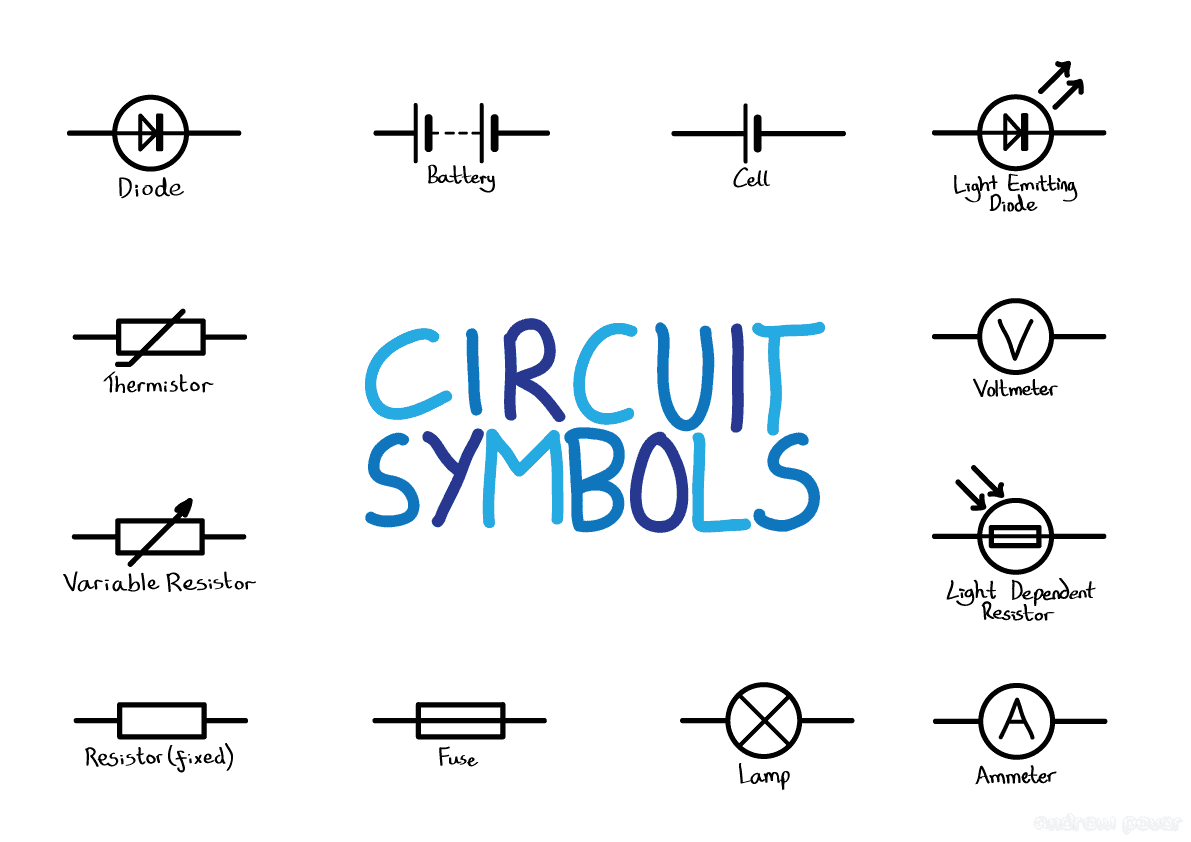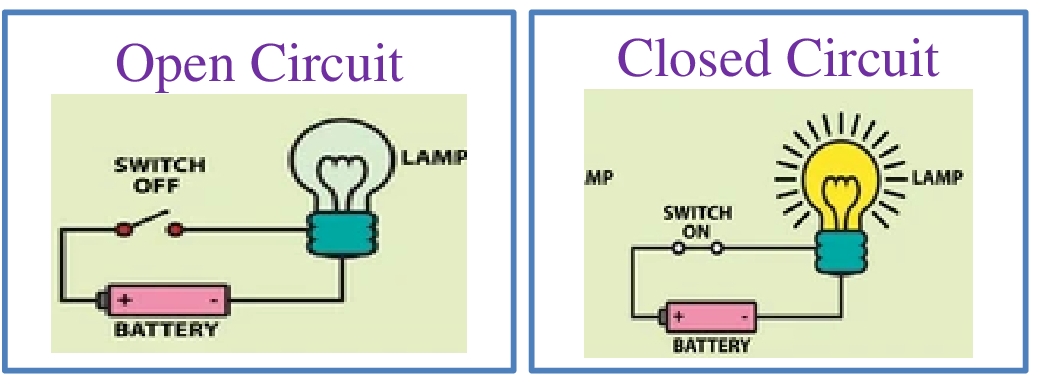Unlocking the Secrets of Circuit Symbols: Open and Closed
Have you ever gazed upon the intricate tapestry of lines and squiggles that comprise an electrical diagram, feeling a sense of wonder and perhaps a touch of intimidation? These symbolic representations hold the key to understanding the flow of energy, and among them, the open and closed circuit symbols stand as fundamental building blocks. Embark on a journey with us as we decode these essential glyphs and illuminate their significance in the realm of electronics.
Imagine a river, flowing freely towards the sea. This continuous path mirrors the essence of a closed circuit, where electricity can travel unimpeded. Conversely, picture a dam interrupting the river's course. This blockage represents an open circuit, where the electrical flow is halted. These simple analogies offer a glimpse into the core principles governing these crucial symbols.
The open and closed circuit symbols are far more than mere markings on a page. They are the language of electrical design, enabling engineers and hobbyists alike to communicate complex systems with clarity and precision. Whether you're troubleshooting a faulty appliance or designing a cutting-edge electronic device, understanding these symbols is paramount.
Delving into the historical origins of circuit symbols reveals a fascinating evolution. Early diagrams often relied on realistic depictions of components, making them cumbersome and difficult to interpret. Over time, these representations evolved into the streamlined symbols we use today, reflecting a move towards abstraction and standardization. The emergence of these symbols revolutionized the field of electronics, facilitating communication and collaboration across disciplines.
The open circuit symbol, often depicted as a break in a line, signifies an interruption in the electrical pathway. This break can manifest in various forms, from a disconnected wire to a malfunctioning switch. A closed circuit symbol, typically represented by a continuous, unbroken line, indicates a complete path for current to flow. This uninterrupted pathway is essential for the proper functioning of any electrical device. These seemingly simple symbols unlock the flow of energy, empowering us to harness its potential.
The importance of understanding open and closed circuit symbols cannot be overstated. These symbols are the foundation of circuit analysis, allowing us to predict the behavior of electrical systems and troubleshoot problems effectively.
Consider the example of a simple light bulb circuit. When the switch is in the "on" position, it creates a closed circuit, allowing current to flow from the power source, through the switch, and to the light bulb, causing it to illuminate. Flipping the switch to the "off" position opens the circuit, interrupting the flow of current and extinguishing the light. This simple illustration demonstrates the practical application of open and closed circuit principles.
One of the primary benefits of understanding these symbols is the ability to troubleshoot electrical issues. By tracing the flow of current through a circuit diagram, we can identify points of failure and determine the root cause of malfunctions.
Another advantage lies in the ability to design and build new electrical systems. By utilizing these symbols, engineers can create detailed blueprints for complex circuits, ensuring proper functionality and performance.
Furthermore, these symbols facilitate effective communication among engineers, technicians, and other professionals in the field. This shared language ensures clarity and minimizes the risk of misinterpretations.
Advantages and Disadvantages of Understanding Open and Closed Circuit Symbols
| Advantages | Disadvantages |
|---|---|
| Troubleshooting electrical faults | Requires initial learning and practice |
| Designing new electrical systems | Can become complex with intricate circuits |
| Effective communication among professionals | Misinterpretation can lead to errors |
Best practices for working with these symbols include meticulous attention to detail, consistent application of standards, and regular practice to reinforce understanding.
Frequently Asked Questions:
1. What is an open circuit? A: An open circuit is a break in the electrical pathway.
2. What is a closed circuit? A: A closed circuit is a complete path for current to flow.
3. What does the open circuit symbol look like? A: It is typically represented by a break in a line.
4. What does the closed circuit symbol look like? A: It is typically represented by a continuous, unbroken line.
5. Why are these symbols important? A: They are fundamental for understanding and working with electrical circuits.
6. How can I learn more about these symbols? A: Many online resources and textbooks offer detailed explanations.
7. Are there different variations of these symbols? A: While the basic principles remain the same, some variations exist depending on the specific application.
8. What are some common mistakes to avoid when working with these symbols? A: A common mistake is to confuse open and closed circuit conditions.
In conclusion, the open and closed circuit symbols serve as the bedrock of electrical understanding. They provide a visual language that transcends complexity, empowering us to harness the power of electricity. From the humble light switch to the most sophisticated electronic device, these symbols guide our understanding and enable us to create, troubleshoot, and innovate. As you continue your exploration of the electrical realm, embrace these symbols as essential tools on your path to mastery. They are the keys to unlocking the boundless potential of energy flow, waiting to be harnessed by those who seek to understand their intricate dance.
Quenching thirst in bulk the coca cola gallon jug
Pollen count reno nv
Unlocking smiles the magic of pink gifts for girls














